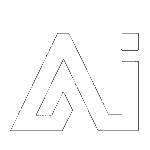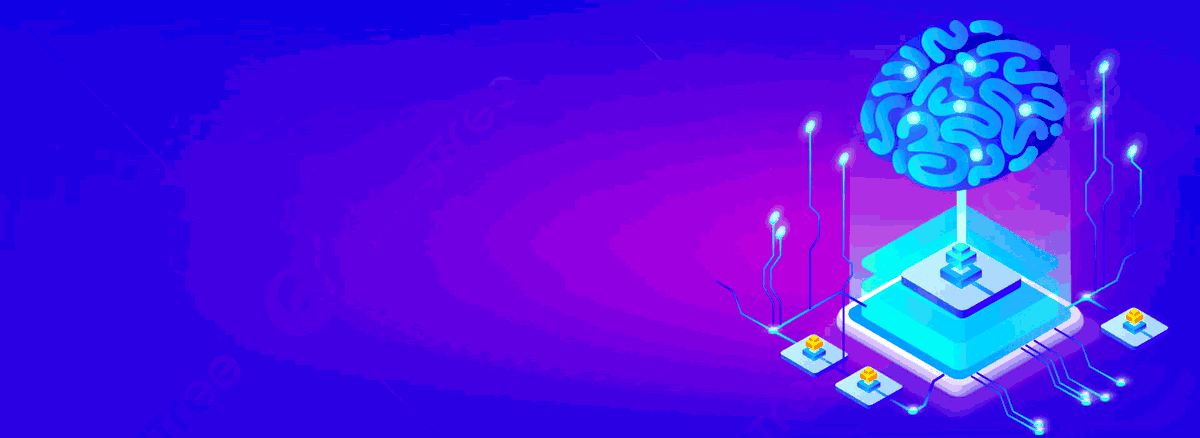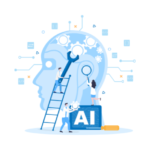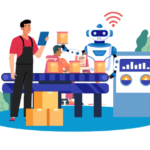 The Limits of AI Code Generation become apparent in tasks requiring deep understanding or emotional intelligence, where human input remains irreplaceable.
The Limits of AI Code Generation become apparent in tasks requiring deep understanding or emotional intelligence, where human input remains irreplaceable.
As technology advances, it’s becoming increasingly common for AI to be used in a wide range of industries. One area where AI is making significant strides is in code generation, with developers now able to use AI to create entire code bases automatically.
However, there are limitations and boundaries to what AI can do that developers need to be aware of when using this technology.
AI Code Generation
Artificial intelligence has made significant progress in recent years, and its impact is being felt in various sectors. One of the most promising areas of AI application is code generation. Developers can leverage AI code generation tools to automatically create code for specific tasks.
However, there are challenges in AI code creation. While AI code generation tools have made significant strides in recent years, they are not yet perfect. These tools face limitations in understanding the requirements of complex tasks and may produce code that is not optimal or even functionally incorrect. Additionally, there is a significant learning curve for developers who must learn to work with AI-generated code and integrate it into their projects.
Despite these challenges, the capabilities of AI code generation are impressive. It has the potential to accelerate development significantly, allowing developers to focus on higher-level tasks. Furthermore, it can help reduce human error and inconsistencies in code production. As AI code generation tools become more advanced and refined, they will likely become an essential part of the development process.
The Role of AI in Coding
Artificial Intelligence has transformed many industries, including the field of coding. AI has become an integral part of the coding process, helping to automate tasks and making programming faster and more efficient. However, AI code generation has its limitations, and it is important to understand its boundaries.
One of the key limitations of AI code generation is its lack of creativity. While AI can assist in coding tasks, it cannot replace the creativity and intuition of human developers. AI-generated code is limited by the data it has been trained on, and cannot create new solutions that deviate from its training.
Another limitation of AI code generation is the potential for bias and lack of diversity. AI algorithms are only as unbiased and diverse as the data they have been trained on. If the training data is biased or lacks diversity, the AI-generated code will also reflect these biases.
Additionally, AI code generation is limited by the complexity of the task at hand. While AI can perform simple and repetitive tasks, it struggles with more complex tasks that involve abstract concepts and creative problem-solving.
It is important to recognize these limitations and understand the boundaries of AI code generation. While AI can provide valuable assistance in coding, it cannot replace human developers and their creativity, intuition, and problem-solving abilities.
AI Code Generation Process
AI code generation is a complex process that involves multiple stages and techniques. At its core, it relies on machine learning algorithms and natural language processing to analyze existing code and generate new code based on predefined rules and parameters. However, there are several constraints and limitations that developers must take into account when using AI for code generation.
AI Code Generation Capabilities
One of the main advantages of AI code generation is its ability to quickly generate large amounts of code with high accuracy. This can be particularly useful for tasks such as data processing, automation, and software testing. AI algorithms can analyze vast amounts of data and produce code that performs specific tasks with minimal errors. Additionally, AI code generation can help reduce the time and effort required for repetitive coding tasks, allowing developers to focus on more complex and creative aspects of software development.
AI Code Generation Constraints
Despite its many benefits, AI code generation is subject to several constraints and challenges. For example, AI algorithms are limited by the quality and quantity of data they are trained on. Insufficient or biased data can lead to inaccurate or incomplete code generation, which can be detrimental to software performance and functionality. Additionally, AI-generated code may lack the flexibility and creativity of human-generated code, which can limit its ability to adapt to unforeseen circumstances or changing requirements. Finally, there are ethical considerations around the use of AI-generated code, including issues of accountability, transparency, and bias.
The AI Code Generation Process
The AI code generation process typically involves several stages, including data collection, pre-processing, feature extraction, model training, and code generation. During the data collection stage, developers gather a large dataset of code samples that will be used to train the AI algorithm. The pre-processing stage involves cleaning and formatting the data to ensure that it is compatible with the model architecture. Feature extraction involves identifying relevant features or structures within the code that can be used to train the model. Model training involves using machine learning algorithms to train the model on the dataset, adjusting the model parameters to minimize errors and improve accuracy. Finally, code generation involves using the trained model to generate new code based on predefined rules and parameters.
While the AI code generation process has the potential to revolutionize software development, it is important to recognize its limitations and constraints. By combining the strengths of AI-generated code with the creativity and flexibility of human expertise, developers can create more robust and efficient software solutions that meet the evolving needs of their customers.
The Impact of AI Code Generation
AI code generation has the potential to revolutionize various industries by automating the coding process. However, there are also limitations to the use of AI-generated code.
One of the main limitations is the quality of the code. While AI can create code quickly, it may not always be efficient or error-free. This can lead to challenges in AI code creation, as developers may need to spend additional time fixing errors and optimizing the code.
Another challenge is the limited creativity of AI-generated code. AI is only able to generate code based on the patterns and data it has been trained on, which can lead to repetitive and predictable code. This can be a limitation in certain industries where creativity and innovation are essential.
Additionally, AI-generated code may not always be able to account for the nuances of human behavior or context. For instance, AI may not be able to fully understand the complexities of user interaction or user experience, which can lead to limitations in AI-generated code.
Despite these limitations, AI code generation has numerous potential use cases and can be highly beneficial in many ways. It can speed up the coding process, reduce human error, and free up developers to focus on other areas of development.
It is important to note, however, that AI-generated code should be used in combination with human expertise to ensure the best possible results. This balance between AI and human expertise is critical in order to leverage the full potential of AI code generation while being aware of its limitations and challenges in AI code creation.
Ethical Considerations in AI Code Generation
As AI code generation becomes more prevalent, it is important to consider the ethical implications of its use. While AI has the potential to revolutionize the coding landscape, it is important to set boundaries to ensure that it is used ethically.
One important consideration is the potential for AI-generated code to perpetuate bias and discrimination. If the data used to train AI models is biased, the resulting code will be biased as well. This can lead to discriminatory outcomes and perpetuate existing societal inequalities. To address this, developers must ensure that they are using diverse and representative data to train their models.
Additionally, there is a concern about job displacement caused by AI code generation. As AI becomes more adept at generating code, it may replace the need for human developers in certain areas. This could lead to significant job loss and create economic instability. Developers must consider the impact that AI code generation may have on the job market and work towards solutions to mitigate its negative effects.
Finally, there is a concern about the potential misuse of AI-generated code. If the technology falls into the wrong hands, it could be used for malicious purposes such as creating fake news or launching cyber attacks. This highlights the importance of implementing strict regulations and safeguards around the use of AI code generation.
In conclusion, while AI code generation has the potential to be a powerful tool, it is crucial to consider the ethical implications of its use. By setting boundaries and implementing safeguards, developers can ensure that AI-generated code is used ethically and for the betterment of society.
AI Code Generation Use Cases
AI code generation has the potential to revolutionize the way we develop software, but it’s important to understand both its capabilities and limitations. Here, we examine some real-world use cases of AI-generated code.
Automated Testing
One of the most promising use cases for AI code generation is in automated testing. AI can be used to analyze large quantities of data, identify patterns, and use this information to automate the creation of test scripts. This not only saves time, but it can also improve the accuracy and reliability of testing, reducing the likelihood of human error.
However, it’s important to note that while AI can generate test scripts, it cannot identify every possible scenario or edge case. Human expertise is still necessary to ensure thorough testing.
Language Translation
AI-generated code can also be used in language translation. By analyzing patterns in data and language structures, AI can generate code that can translate text from one language to another.
However, like with testing, there are limitations to what AI-generated code can do. It may struggle with more complex translations or with languages that have different structures than what it has been trained on.
Code Optimization
Another use case for AI-generated code is code optimization. AI can analyze large codebases and identify areas where code can be optimized or made more efficient, potentially saving significant amounts of time and resources.
However, optimization is a complex process and requires a deep understanding of both the code itself and the intended purpose of the code. While AI can identify areas for improvement, it still requires human expertise to make decisions about how to optimize the code.
Overall, AI code generation has many potential use cases, but it’s important to be aware of its limitations and challenges. While AI-generated code can save time and improve efficiency, it cannot replace the knowledge and expertise of human developers.
Improving AI Code Generation
While AI code generation has made significant strides in recent years, there are still several limitations that need to be addressed. The challenges in AI code creation primarily stem from the complexity of coding and the lack of domain-specific knowledge.
One of the main limitations of AI code generation is its inability to handle non-linear logic and complex decision-making processes. This is because most AI models are trained on linear data and require significant amounts of data to learn complex structures. Furthermore, most AI models lack the intuitive reasoning capabilities of humans, making them unsuitable for creative problem-solving tasks.
Improving AI Code Generation Capabilities
To overcome the challenges in AI code creation, developers need to focus on improving the capabilities of AI models. One way to achieve this is to incorporate more domain-specific knowledge into the models. By integrating domain-specific knowledge from experts, AI models can learn the intricacies of coding and make more informed decisions.
Additionally, developers can use unsupervised learning techniques to teach AI models to recognize patterns and relationships within coding structures. By doing so, AI models can learn to create more complex code structures and make more intuitive decisions.
Addressing AI Code Limitations
While improving AI code generation capabilities is essential, it is equally important to address the limitations and constraints of AI models. One issue is that AI-generated code is often difficult to debug, making it challenging for developers to identify and fix errors. Furthermore, AI models are prone to overfitting, meaning they can memorize specific patterns in the data rather than learning the underlying logic.
To address these limitations, developers can use ensemble models that combine multiple AI models to achieve greater accuracy and reliability. Additionally, developers can incorporate human feedback into the AI models, allowing them to learn from human intuition and domain-specific knowledge.
In conclusion, improving AI code generation capabilities and addressing its limitations are critical areas for the development of AI in the coding landscape. While there are still many challenges to overcome, the benefits of incorporating AI into the coding process are significant, and the potential for innovation is vast.
Balancing AI and Human Expertise
While AI code generation has shown remarkable progress, it is important to balance its capabilities with human expertise. AI is still limited by its programming and cannot always account for ethical considerations or unique problem-solving. AI models may also be biased based on the data they are trained on, and as such, human oversight is crucial in ensuring equitable outcomes through the coding process.
There is also a need to set boundaries for AI code generation to align with ethical principles and regulations. Developers need to ensure that AI-generated code does not infringe on privacy or contribute to unethical practices. As such, it is vital to create a framework that sets clear boundaries for the use of AI in coding projects and determines the specific tasks where human input is necessary.
Risks and Limitations of AI Code Generation
The development of AI code generation has revolutionized the coding landscape, increasing efficiency and decreasing the time and resources required for projects. However, it is important to acknowledge the potential risks and limitations associated with solely relying on AI-generated code.
One of the main constraints in AI code generation is the limitation of data. AI algorithms require massive amounts of data to accurately analyze and predict outcomes, meaning that the quality of the generated code is highly dependent on the quality and quantity of input data. Additionally, AI-generated code may lack the creativity and ingenuity that human developers possess, leading to code that may not be optimized for all scenarios.
Moreover, there is a risk that AI code generation may inadvertently perpetuate biases present in the input data, which can lead to unfair and discriminatory outcomes in the code. In some cases, AI-generated code may also be vulnerable to hacking or security breaches due to its reliance on pre-existing code libraries.
Despite these limitations and risks, AI code generation technology has the potential to significantly enhance the coding process when used appropriately and in conjunction with human expertise.
Leveraging AI Code Generation in Development
As AI code generation continues to evolve, developers are finding ways to leverage its capabilities in their development processes. However, it is important to be aware of the constraints and boundaries of AI code generation to ensure its effective use.
One way to leverage AI code generation is to use it for repetitive and mundane coding tasks. This frees up developers’ time to focus on more complex coding challenges that require human expertise.
Another way is to use AI-generated code as a starting point, allowing developers to more quickly prototype and test their ideas. However, it is important to remember that AI-generated code may not be perfect and will likely require manual adjustment and refinement.
It is also important to consider the limitations and constraints of AI code generation in order to avoid relying on it too heavily. AI code generation is still in its early stages, and there are certain coding tasks that AI cannot currently handle. Developers must be aware of these limitations and be prepared to step in and provide human expertise where necessary.
Ultimately, the effective use of AI code generation in development requires a balance between leveraging its capabilities and recognizing its limitations. By doing so, developers can streamline their workflow and increase productivity while still ensuring the quality and accuracy of their code.
Challenges and Opportunities in AI Code Generation
While AI code generation presents exciting opportunities for developers, it also comes with its fair share of challenges. One of the main challenges is ensuring that the AI-generated code is accurate and effective. Developers must carefully review and test the code to ensure it meets their requirements and works as intended.
Another challenge is ensuring that the AI-generated code is maintainable and scalable. While automated code can be generated quickly and efficiently, it may not be optimized for long-term maintenance and scalability. Developers must consider the long-term implications of using AI-generated code and ensure that it is designed for future growth and expansion.
One of the biggest opportunities presented by AI code generation is the potential to increase productivity and efficiency. By automating repetitive coding tasks, AI can free up developers to focus on more complex problem-solving and innovative projects.
AI can also improve the accuracy and consistency of code and reduce the likelihood of human error. This can save significant time and resources by preventing coding mistakes and minimizing the need for manual coding revisions.
Finally, AI code generation can potentially democratize coding and make it more accessible to a wider range of individuals and organizations. With AI-generated code, individuals with little to no coding experience can create functional programs and applications, opening up new opportunities for innovation and development.
Overall, while there are certainly challenges that come with utilizing AI code generation in the coding landscape, the opportunities to increase productivity and democratize coding make it a promising avenue for development.
Final Thoughts
While AI code generation has many capabilities and potential use cases, it is important to keep in mind its limitations and constraints. AI-generated code still has a long way to go before it can fully replace human expertise in the coding process.
As we have discussed, one of the main challenges in AI code generation is the difficulty of accurately interpreting and understanding human intent and context. This often leads to errors and limitations in the output of AI-generated code.
Additionally, ethical considerations must be taken into account when utilizing AI code generation in order to ensure that boundaries are properly set and that the technology is not used in ways that could have negative consequences.
External Resources
FAQ
FAQ 1: Why Can’t AI Code Generators Handle Highly Creative Coding Tasks?
Answer: AI code generators excel at pattern recognition and replicating known coding practices but struggle with truly creative or innovative coding challenges that require out-of-the-box thinking. For instance, generating a novel algorithm to solve an unprecedented problem goes beyond the AI’s training data. Here’s a simple example demonstrating an AI’s attempt to generate a creative solution:
# AI-generated code for a novel sorting algorithm (Hypothetical Example)
def ai_generated_sort(array):
# AI attempts to create a new sorting mechanism
# This is where the AI struggles, as it can't invent new algorithms beyond its training
return sorted(array) # Fallbacks to a standard methodThis code shows that when tasked with inventing a new sorting algorithm, an AI might default to known methods, lacking the creativity to innovate.
FAQ 2: Can AI Code Generators Understand and Implement Business Logic From Sparse Details?
Answer: AI code generators need clear, detailed instructions to generate useful code, especially for complex business logic. They are not yet capable of inferring nuanced requirements from sparse or ambiguous details. For example, generating code based on a vague description of a business process can result in inaccuracies or oversimplified solutions:
// AI-generated code based on vague business requirements (Hypothetical Example)
function generateInvoice(customer, items) {
// AI tries to infer business logic for invoice generation
// Without detailed requirements, the output might not meet specific business needs
return `Invoice for ${customer}: ${items.join(", ")}`;
}This JavaScript function illustrates how an AI might oversimplify a task like invoice generation without detailed input, missing critical business logic.
FAQ 3: How Do AI Code Generators Deal With Highly Domain-Specific Tasks?
Answer: AI code generators are trained on diverse datasets but may lack depth in specific domains, making them less effective for tasks requiring specialized knowledge. They can generate basic code but might miss nuances of domain-specific requirements. Here’s an example in the medical field:
// AI-generated code for a medical application (Hypothetical Example)
public class AIHealthcareApp {
// AI-generated method to calculate dosage - might not fully comply with medical standards
public double calculateDosage(String medication, double weight) {
// Simplified and potentially inaccurate dosage calculation
return weight * 2.5; // Generic formula, not specific to any medication
}
}This Java code snippet shows how an AI’s lack of domain-specific understanding can result in a generic, potentially inaccurate dosage calculation, underscoring the importance of expert oversight in sensitive areas.
Benjamin Bale is a distinguished expert in the field of AI development and an esteemed author for the “Hire AI Developer” blog. With a remarkable decade-long experience in the industry, Benjamin has cemented his reputation as a leading authority in AI app and website development, as well as AI backend integrations. His profound passion for AI and its transformative potential is evident in every aspect of his work.
Benjamin’s journey into the world of AI began at Edinburgh University, where he pursued his studies in AI and Mathematics. It was during this time that he cultivated a deep understanding and fascination for the subject. Throughout his career, Benjamin has accumulated extensive experience working with industry giants such as Goldman Sachs, Tencent, and Ali Express. These invaluable experiences have not only sharpened his skills in integrating existing systems with AI APIs but have also solidified his status as a consummate professional in the field.
Currently residing in the vibrant city of London, Benjamin finds solace in his role as both an author and developer. Beyond his professional endeavors, he takes great joy in the company of his faithful canine companion, Chad, and indulges his passion for snowboarding in the picturesque mountains of France. Benjamin’s unwavering dedication to advancing AI technology, combined with his wealth of knowledge and practical expertise, make him an invaluable asset to the “Hire AI Developer” team and an invaluable resource for readers seeking profound insights into the realm of AI.






